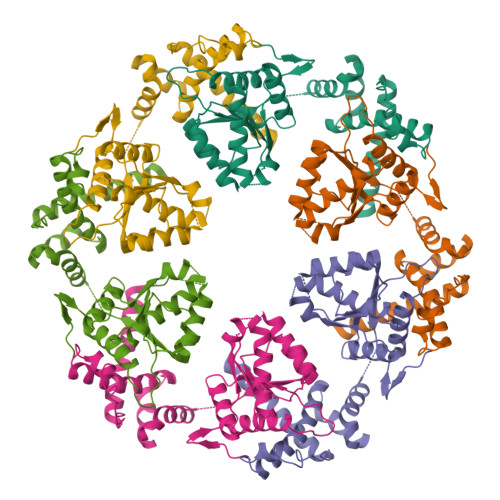Structure of Green-Type Rubisco Activase from Tobacco
Stotz, M., Mueller-Cajar, O., Ciniawsky, S., Wendler, P., Hartl, F.U., Bracher, A., Hayer-Hartl, M.(2011) Nat Struct Mol Biol 18: 1366
- PubMed: 22056769
- DOI: https://doi.org/10.1038/nsmb.2171
- Primary Citation of Related Structures:
3T15, 3ZW6 - PubMed Abstract:
Rubisco, the enzyme that catalyzes the fixation of atmospheric CO(2) in photosynthesis, is subject to inactivation by inhibitory sugar phosphates. Here we report the 2.95-Å crystal structure of Nicotiana tabacum Rubisco activase (Rca), the enzyme that facilitates the removal of these inhibitors. Rca from tobacco has a classical AAA(+)-protein domain architecture. Although Rca populates a range of oligomeric states when in solution, it forms a helical arrangement with six subunits per turn when in the crystal. However, negative-stain electron microscopy of the active mutant R294V suggests that Rca functions as a hexamer. The residues determining species specificity for Rubisco are located in a helical insertion of the C-terminal domain and probably function in conjunction with the N-domain in Rubisco recognition. Loop segments exposed toward the central pore of the hexamer are required for the ATP-dependent remodeling of Rubisco, resulting in the release of inhibitory sugar.
Organizational Affiliation:
Department of Cellular Biochemistry, Max Planck Institute of Biochemistry, Martinsried, Germany.
















